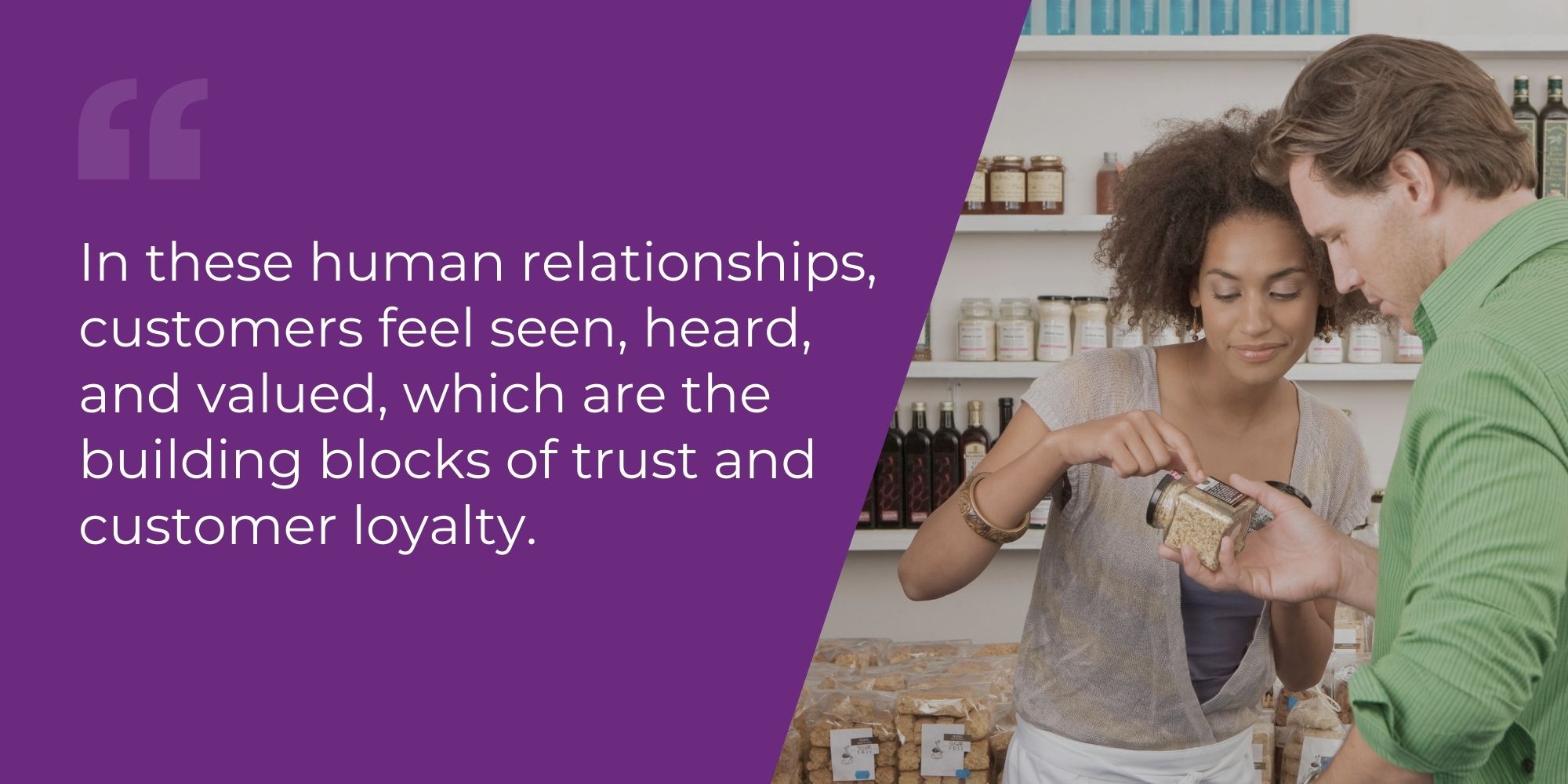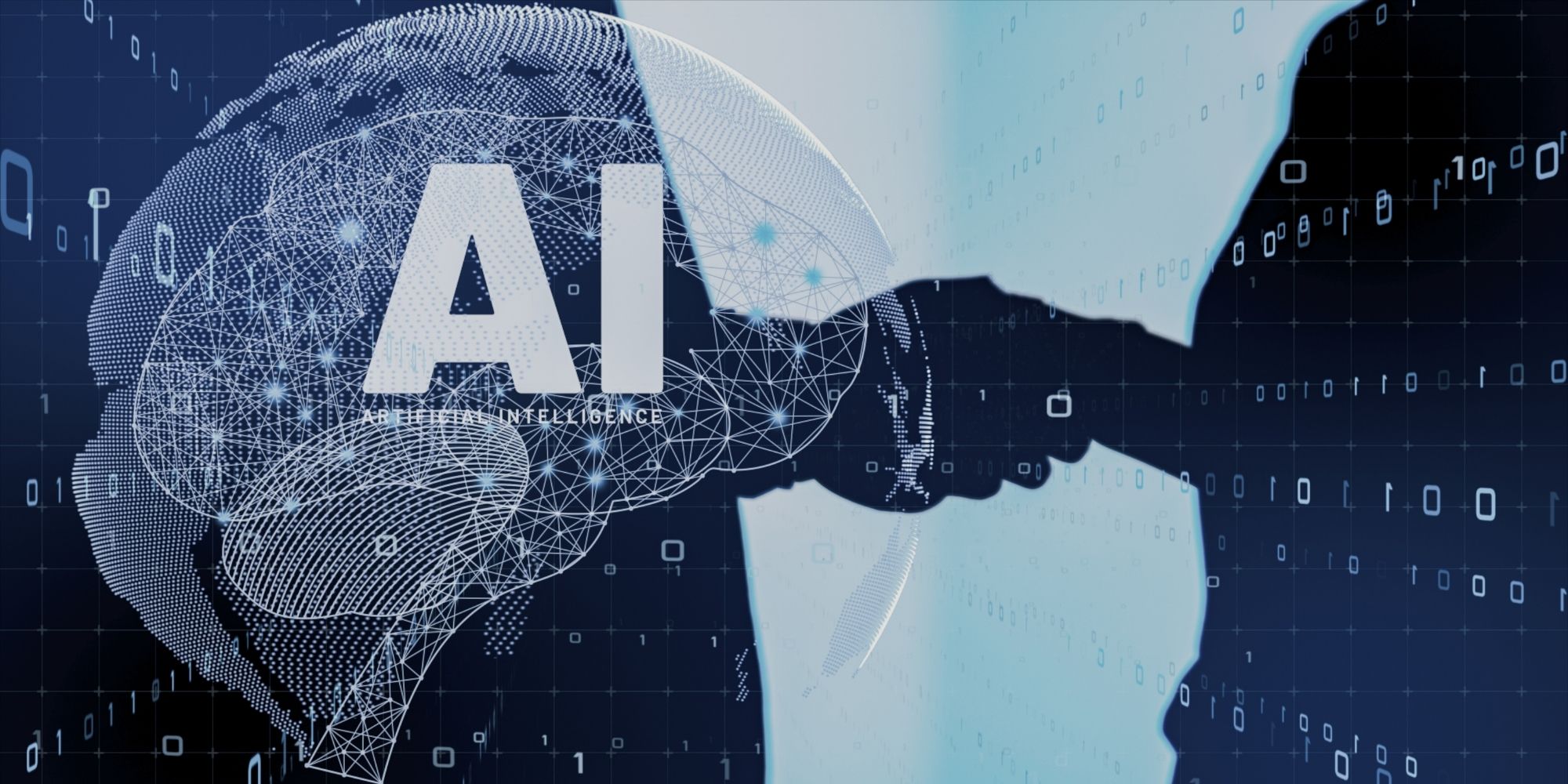Learn more about Colin Shaw: Join over 85,000 people on our LinkedIn Newsletter list or visit our website for more great podcast episodes.
Listen to the podcast:
Artificial Intelligence (AI) has some excellent applications in Customer Experience, applications that can transform the processes in customer interactions. However, after all the sci-fi we have grown up watching, it is natural to wonder what the entrance of AI will mean for the humans involved.
Today, we look closely at the relationships between humans and AI in Customer Experiences and how they complement rather than replace one another when building customer relationships.
Ali Cudby, CEO of Alignment Growth Strategies, a Customer Experience consultancy, sent us a video about human and AI relationships and how to leverage AI to build customer relationships.
Let’s play the video:
I found that video helpful in considering how to use AI to build an experience. I especially like how Cudby gives you tools you can use today that leverage AI to enhance experiences and streamline your efficiency.
For example, regarding customer education, she brings up Synthesia, which generates an AI voiceover for video scripts. That means when you need to change a video, you can use this tool to update it rather than re-record the whole thing. Moreover, it translates it into different languages for your global or multicultural audience.
Cudby also mentions Absorb, a company that uses AI in the learning management space (LMS). Absorb creates presentations based on prompts one feeds it. This tool reduces the time needed to create presentations and makes them easier to update as your product or offer changes.
Cudby’s video is interesting in a couple of ways. She shares these tools because they allow you to communicate more accurately with customers faster and free up your time to focus on areas where personalization matters. However, she also points out what humans bring to the relationship.
Cudby says AI is an effective tool to help you build relationships; it is not a replacement for genuine, personalized experiences delivered by humans who care about their customers’ needs. In these human relationships, customers feel seen, heard, and valued, which are the building blocks of trust and customer loyalty.

As a customer, I can say from personal experience that accurate videos are key to customer experiences. Having recently replaced my microwave in my kitchen, I find the function videos on YouTube extremely helpful for using the various new features I am unfamiliar with. It’s so much better than calling in for help with tech support or, worse, reading the paper manual (the very thought!).
However, I can think of situations where I would want to have a human being there, either through a video or live. There are some situations where a person there can make a significant difference in how that experiential moment transpires.
Spotting the Fakes
It is important to note that regarding videos, AI-generated videos have more sinister applications. In an election year, verifying the authenticity of what you see online is especially critical. The good news is that you can usually tell at this point what is real video and what isn’t
However, I foresee a day when you can’t tell.
Of course, microwave functions or product demonstrations aren’t usually the target of trickery. Yes, marketing and spin, but complete falsehood isn’t the end game.
Memory helps us here as customers. We have schema matching, which describes how, as we experience things, we form memory structures that allow us to anticipate where things will go. There are schemas for fast-food interactions, business meetings, and conversations with your insurance company. You have had these experiences before, so you know what to expect (generally) from the one you are having now.
That’s why we sometimes feel uncomfortable in a situation where we have no experience. We don’t know what to anticipate or what to do, and it feels unsettling.
Schema matching is the work of our intuitive brain, which is the fast, automatic thinking we use in our cognition. It works to package up memories and deliver them to consciousness to make you more efficient and competent. So, in situations where you have a lot of experience, you usually have a lot of both qualities going for you.

Schema matching also helps identify fakes. In fake videos, our cognition reports to our consciousness when something isn’t right. It brings the anomaly to our attention, helping us make better judgments.
We have schemas around people and brands. Researchers have used the schema theory to investigate brand extensions. So, if a famous soda brand has a new flavor, you can accept that probability. However, if the cola brand is getting into the electric car business, you would likely pull up a “what’s that again?” reaction. It doesn’t fit their schema to be into cars.
Here is a funny story. A recent article took a deeper dive into the “I am not a robot” prompt we get on websites. You might have thought, “Wouldn’t a robot just click that option, too?” They would click on the option if that were part of their programming.
However, robots would click it so efficiently that the website knows it is a robot. By contrast, a human would fumble around to get situated on the mouse and then take a loopy, unorganized path to click in the box because we have much less efficient motor skills. Then, by our ineptitude, the website knows we are human.
This accuracy and efficiency often give away fakes in academia, too. How? Too good is frequently the giveaway for AI-generated work. Professors know when something is clean and organized with perfect grammar and spelling for their students to have written them.
Cudby gave some good advice on how to use AI effectively in customer training systems—however, there’s a larger point underlying that advice, which is even more significant. You must understand what is driving value for your customers. This area is where you optimize.

So, What Should You Take Away from This Discussion?
Blue Ocean Strategy is an old but great book that discusses this concept in detail. The authors suggest determining what is most important to your customers is where you maximize your efforts. This focus is on your target customers, not the whole market. In essence, the book explains that you are wasting money by focusing resources anywhere else.
Many firms ignore this strategy and instead try to compete on every attribute. In these cases, companies end up in the mid-tier because they lack focus. Their attention is too spread out, and it holds them back from greatness in the areas that matter most to their customers.
Cudby argues in favor of The Blue Ocean concept that at least one part of your customer experience should be great. In her video, she suggests that customer training videos for product features are a key area customers value. I agree, particularly when I am hungry and holding a cold cup of soup outside my fancy new microwave that I don’t know how to run.
Many businesses do not focus on customer training videos. However, it could be an excellent place to introduce AI tools and enhance them for customers.
Another key word here is context. So, what is the context of that experience? That answer will help you determine where value lies for customers.
For example, we helped a mobile company optimize lost and stolen processes. We reminded them that the customer was likely feeling strong emotions in either situation that would affect the context of the experience. If you had your purse stolen, how would you feel when you called the mobile phone company? How would you feel if you realized you had just left the phone in the taxi?
Imagine how you would feel if the first question out of the agent’s mouth was all business: looking for an account number.
Cudby provided great tools for making the training and the learning tools more efficient by using AI—moreover, that’s great advice for an often-neglected area at many companies.

However, it is also important to remember where humans provide value. In some cases, like the Masterclass Series companies, humans are the product. Their experience and expertise delivered to students is what the company sells. So, deploying AI there would be disastrous.
The point here is to remember the value you provide. If AI doesn’t enhance or improve it, skip it.
Human contact is still the number one way to build relationships. AI is excellent for taking over mundane (read: time-consuming, repetitive tasks). Leveraging the strength of both will help you deliver outstanding results in both areas.
I appreciated this topic introduced by Cudby. What would you like to talk about? Let us know by clicking here as part of our None of Us is as Clever as All of Us feature.

This review sums it up: “The dynamic between the two hosts absolutely makes this podcast. Each brings a unique take on the topic, their own perspective, and plays off each other’s sense of humor. I come away after each episode with a feeling of joy and feeling a bit smarter”.
Listen to the podcast: https://beyondphilosophy.com/podcasts


